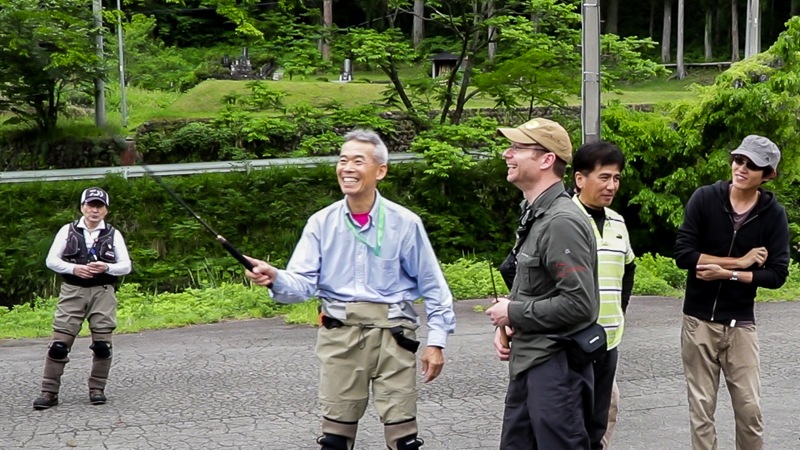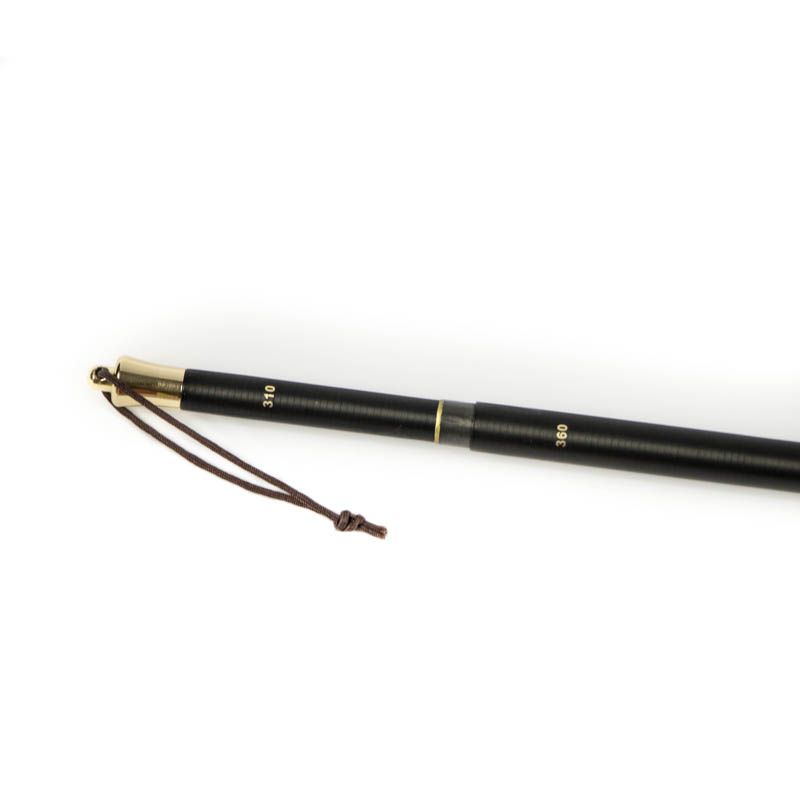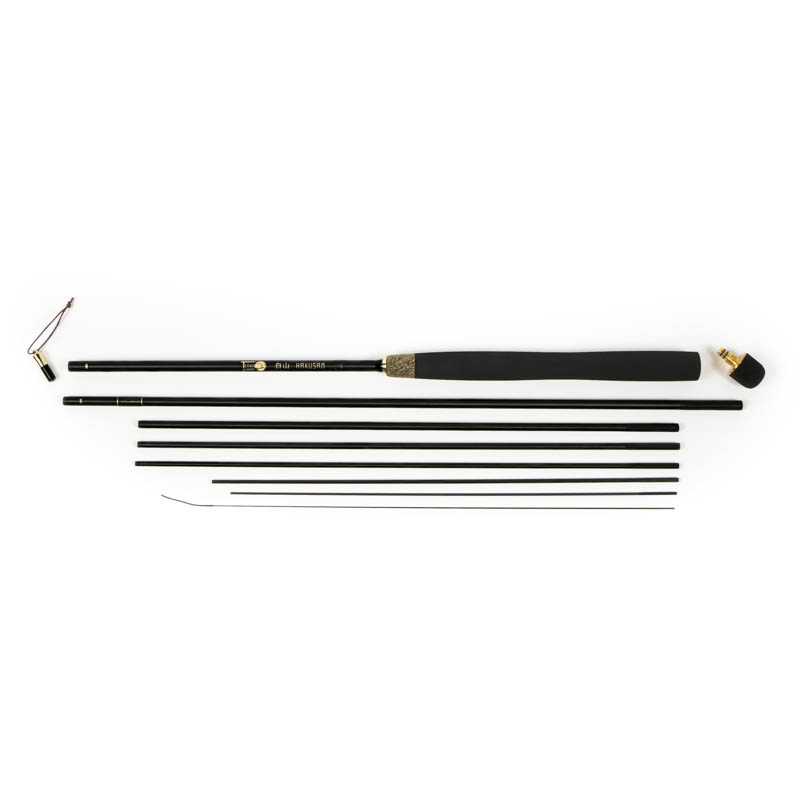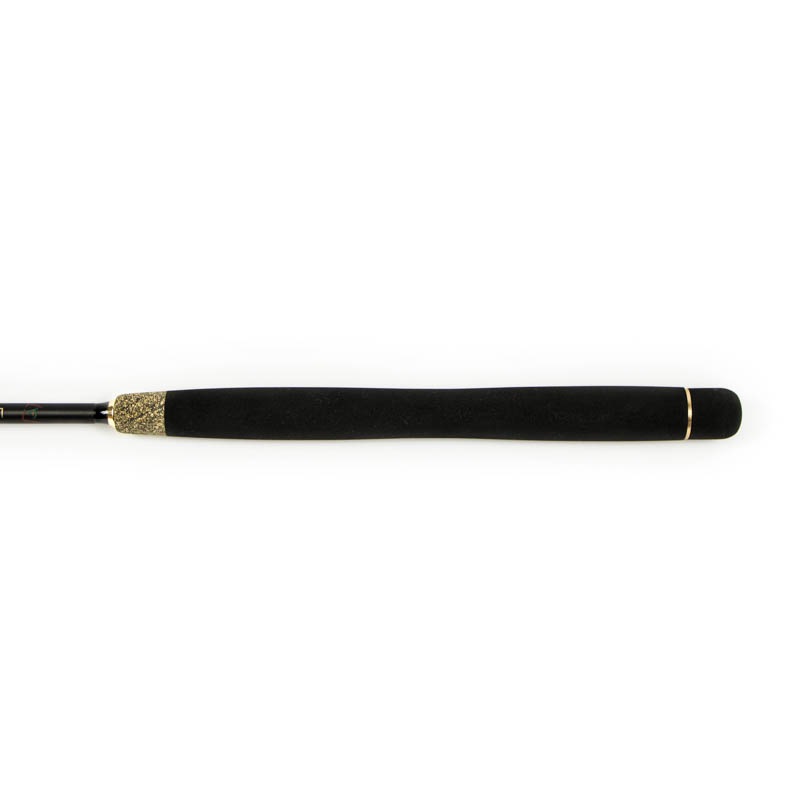The Itoshiro river system (and the wonderful local community, including Shouichi Saitou – Conservationist, bamboo rod maker and pioneer of Catch and Release in Japan) have special meaning for me and John.
The Itoshiro River gave us our very first experience of catching iwana and amago using authentic tenkara techniques. We have since used those same Japanese tactics on our home streams with fantastic success.
The waters of this complex system of mountain streams and powerful rivers are fed by the snow that melts from the mountain range that “The White Mountain” or “Haku-san” dominates as the highest peak. The shrine dedicated to the worship of Hakusan looking down on Itoshiro Village (“Hakusan Chukyo Jinja” shrine; pictured here) is a beautiful site surrounded by huge cedar trees which also have great religious significance.

We wanted to mark our affection and respect for this community and ecosystem – and we hope it is done in the correct spirit – by recognising and spreading the knowledge of this mountain – one of three “Holy Mountains” in Japan – alongside Mount Fuji and Mount Tate. As a small, independent tenkara company, we only have a limited number of ways to mark that recognition – but it is a good example of the way we like to put our authentic passion into the products that we spend time to test and develop.
It is only a small gesture to add the Hakusan name to our rod, but we were serious about making that rod live up to the intended level of respect we wanted to show (check out Episode 2 of Tenkara in Focus for a fantastic interview with Saitou-san filmed in Itoshiro in a traditional Japanese inn).
We also, clearly, would like you to understand what makes this rod so enjoyable and effective to use!
…And we have been extremely pleased to see our clients expressions when they first hold and then cast with the rod. This has been a consistent reaction from Italy to England and also to Japan as you can see from the holiday snapshot below at a tenkara gathering in Itoshiro. The group included some very well-respected Japanese tenkara anglers in Sasaki-san’s car park (including Takahashi-sensei).

To focus in on why the rod gets this reaction…Basically, If you want a truly Japanese-actioned, premium tenkara rod then you can choose the Hakusan with confidence. Here’s my sales pitch as to why that is true…
The Hakusan is a 3.1m to 3.6m zoom rod (approx. 10 to 12ft)
It loads perfectly with the lightest of lines, yet has an instant, crisp recovery. The feeling when you fish with it is fine-tuned, perfectly-balanced sensitivity. An effortless squeeze of the hand delivers your fly right on target. It is a joy when playing and landing fish up to roughly a pound and a half in weight or a bit more. The Hakusan is the perfect tool for fishing unweighted fly patterns – especially Japanese kebari!
You can see it in use throughout our recent trailer for “Tenkara in Focus” here
Delicacy with inner strength is an ideal description.
In your hand the Hakusan feels nearly weightless because of its careful construction – and the firm EVA handle transmits every tremble of the line right to your fingertips. The fishing experience is matched only by the very best single-length Japanese rods…
Yet the Hakusan can be fished, and locked, at two different lengths.

The combination of strength, lightness and recovery usually means a fragile rod – but the reverse-carbon construction gives added durability without the need for heavy applications of lacquer.
Reverse-carbon is where the raw cloth is rolled so that the weave is on the outside of the blank (normally it sits on the inside). This lets us keep our favoured stealth, matt finish and even removes the excess weight of lacquer from the equation.
Why a dual-length zoom rod though? (after all, adding additional mechanisms to a tenkara rod needs careful consideration)
Just like many rivers, the Itoshiro river has open sections as well as areas of dense tree canopy. In open water you can enjoy the benefits offered by using the rod at its full length. At any moment, though, you can instantly slide and lock it down to fish as a short rod when you find yourself in tight cover.

As well as avoiding branches, shortening the rod makes the action faster. This is perfect – as it means you only need a much narrower casting arc to load the rod. Moving the tip less while casting in tight cover equals a lower chance of hitting an obstacle…how neat is that?
How come no third zoom-point?
Having just two different fishing lengths is ideal – as we have found that when a third (intermediate) length-setting is available; you hardly ever use it. In the real world, the rod is really always fished at either its full length or shortest length. Not only that – the fewer components in the locking device also minimise potential weaknesses that could develop over time with more complex mechanisms.
Instead our long, contoured grip not only perfectly counter-balances the rod – it also allows you to easily modify the “working length” of the blank. Simply sliding your hand forward or back along the grip basically makes the third zoom-point redundant! NB This Counter-balancing handle is a game-changer for the feel of lightness and avoidance of the irritation of a “nose-heavy” rod.

It is a rod with real “soul” and it is part of a very personal back-story for both me and John and our development as tenkara anglers.
